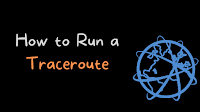The other day, my friend’s high school daughter complained, “It’s not fair!” “What’s not fair?” her mother asked. “Everyone is cheating!” her daughter replied. “They started doing it during COVID, and now it’s a habit.” Unfortunately, academic dishonesty is just one example of the many negative consequences of the COVID pandemic.
In hindsight, we have ample evidence that remote learning during COVID increased hardships for PK-12 students, both academically and non-academically. Some students lacked necessary resources. In one study, even after all students were provided with a laptop computer, internet access, and headphones, low-income students’ school attendance and engagement were consistently less frequent than their higher-income peers (An, 2021). Food insecurity also increased during COVID, partly due to the hiatus of school breakfast, lunch, and take-home snack pack programs (Parekh et al., 2021). And worst of all, children at home during COVID were twice as likely to experience physical abuse and three times likely to experience emotional abuse during the pandemic than in prior years (Park & Walsh, 2022).
Without a doubt, remote learning during COVID was distressing for students, with 71 percent of parents in one study reporting that the pandemic had “taken a toll on their child’s mental health” (Abramson, 2022, para. 2).
It was a stressful time for teachers, too. One study found that teachers experienced higher burnout rates, depression, and anxiety as a result of the rapid transition to remote learning and its extended duration, which led to feelings of isolation, lower work commitment, and higher teacher turnover (Gutentag & Asterhan, 2022).
All of these factors contributed to a substantial decline in student learning during COVID. One year into the pandemic, Kwakye and Kibort-Crocker (2021) reported that 23 percent of low-income students received a failing grade during the pandemic compared to 8 percent of average- and high-income students. After two years, federal achievement data revealed significant drops in third-grade students’ overall math and reading scores across the United States (Camera, 2022).
So now, we’re all back at school, but things have changed. In addition to lingering fears of COVID, the national trend toward disrespect for authority has increased student discipline issues, and the rash of school shootings in recent years has rendered school safety a huge concern (Kurtz, 2022; Oshin, 2022).
Moreover, controversial curricular reform efforts in social studies, science, and health have exacerbated the re-opening of schools, with community feelings of distrust, protests at school board meetings, and parents pulling children from public schools in favor of private and home school options (Sparks, 2022).
Related:
4 tips to build a strong classroom culture this year
7 educators share back-to-school action plans
Dr. Jana Hunzicker, Professor, Department of Education, Counseling, and Leadership & Associate Dean for Academic Affairs, College of Education and Health Sciences, Bradley University
Dr. Jana Hunzicker holds the rank of professor in Bradley’s Department of Education, Counseling, and Leadership and serves as the associate dean for academic affairs for Bradley’s College of Education and Health Sciences.
References
Abramson, A. (2022, January 1). Children’s mental health is in crisis. 2022 Trends Report, 53(1), 69. Retrieved from https://www.apa.org/monitor/2022/01/special-childrens-mental-health
An, S. (2021, March 26). Low-income school districts saw greatest dip in attendance during the pandemic. WBEZ Chicago. https://www.wbez.org/stories/low-income-school-districts-saw-greatest-dip-in-attendance-during-pandemic/37e0e6ef-cfbc-423a-b50b-a28ac458f20e
Association for Middle Level Education (2022). Retrieved from https://www.amle.org/
Camera, L. (2022, September 1). New federal achievement data shows grim trajectory for country’s 9-year-olds. Retrieved from https://www.usnews.com/news/education-news/articles/2022-09-01/new-federal-achievement-data-shows-grim-trajectory-for-countrys-9-year-olds
Gutentag, T. & Asterhan, C. S. C. (2022). Burned-out: Middle school teachers after one year of online remote teaching during COVID-19. Frontiers in Psychology, 13(8). Retrieved from https://www.frontiersin.org/articles/10.3389/fpsyg.2022.802520/full
Kurtz, H. (2022, January 12). Threats of student violence and misbehavior are rising, many school leaders report. Retrieved from https://www.edweek.org/leadership/threats-of-student-violence-and-misbehavior-are-rising-many-school-leaders-report/2022/01
Kwakye, I., & Kibort-Crocker, E. (2021). Facing learning disruption: Examining the effects of the COVID-19 pandemic on K-12 students. Washington Student Achievement Council. https://wsac.wa.gov/sites/default/files/2021-03-30-COVID-Learning-Disruption-Report.pdf
Office of Elementary and Secondary Education (2022). Full-service community schools program (FSCS). Retrieved from https://oese.ed.gov/offices/office-of-discretionary-grants-support-services/school-choice-improvement-programs/full-service-community-schools-program-fscs/
Oshin, O. (2022, September 1). School safety concerns rise to highest level in 20 years: poll. Retrieved from https://news.yahoo.com/school-safety-concerns-rise-highest-115844052.html
Parekh, N., Ali, S.H., O’Connor, J. et al. Food insecurity among households with children during the COVID-19 pandemic: results from a study among social media users across the United States. Nutr J 20, 73 (2021). Retrieved from https://nutritionj.biomedcentral.com/articles/10.1186/s12937-021-00732-2
Park W.J., & Walsh, K.A. (2022) COVID-19 and the unseen pandemic of child abuse. BMJ Paediatrics Open, 6. Retrieved from https://bmjpaedsopen.bmj.com/content/6/1/e001553
Sparks, S. D. (2022, August 16). Public school enrollment continues to stagnate. Retrieved from https://www.edweek.org/leadership/public-school-enrollment-continues-to-stagnate/2022/08
Wahome, C. (2022, April 27). What is Maslow’s Hierarcy of Needs. Retrieved from https://www.webmd.com/mental-health/what-is-maslow-hierarchy-of-needs
Latest posts by eSchool Media Contributors
(see all)



